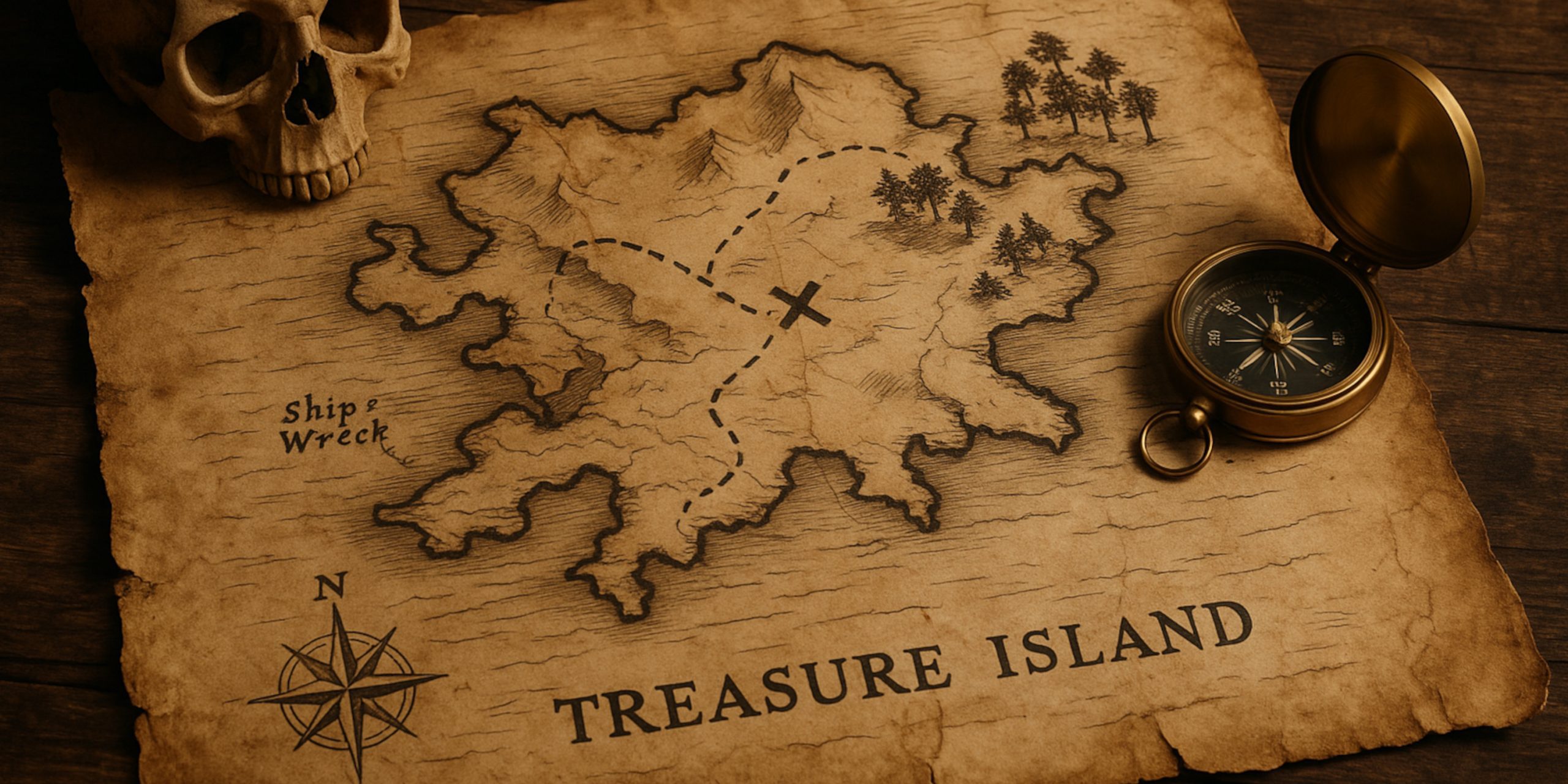
Treasure maps have long stirred the imagination. From pirate legends and buried chests to cryptic symbols and secret islands, the idea that maps can lead to hidden wealth is a staple of adventure fiction. But how much truth lies behind the stories? This article breaks down what we know about treasure maps, where the myths came from, and what historical reality, if any, exists behind the legends.
The Origins of the Treasure Map Myth
The popular image of a treasure map, usually aged parchment marked with an “X” to denote buried gold, owes far more to literature than history. The defining portrayal comes from Robert Louis Stevenson’s Treasure Island (1883), where a hand-drawn map plays a central role in the plot. That novel, and others inspired by it, set the tone for what most people imagine when they think of a treasure map.
Earlier stories of hidden loot do exist, but they rarely involved detailed maps. Pirates, outlaws, and conquistadors might have hidden valuables, but written guides to those caches were highly uncommon.
Did Pirates Really Bury Treasure?
The historical record suggests that pirates rarely buried their loot. Most stolen goods consisted of easily sold commodities such as spices, silks, or alcohol. These items had to be offloaded quickly to convert them into cash or supplies.
There are only a few vague references to hidden or buried treasure among pirates, and even these are second-hand. Captain William Kidd is often cited as having buried treasure on Gardiners Island in 1699, but that event was unusual and tied to his efforts to prove his innocence. No maps were involved.
Famous Cases and Hoaxes
A number of so-called treasure maps have emerged over the centuries, but most are fabrications or misunderstandings.
The Beale Ciphers (USA):
A set of coded messages from the 19th century supposedly reveals the location of buried gold and silver in Virginia. One of the three ciphers has been “solved,” but no treasure has ever been found, and many historians consider it a hoax.
The Oak Island Map (Canada):
Linked to the infamous Oak Island mystery, this supposed treasure map contains symbols believed to point to a hidden vault. However, there’s no direct evidence that the map predates modern speculation.
Lue Map (USA):
Allegedly created by Nazis and linked to hidden wartime treasure, the Lue Map has attracted conspiracy theorists and amateur sleuths alike. Despite numerous expeditions, no one has uncovered a meaningful find.
Real Historical Maps Involving Treasure
While the classic pirate-style map is mostly fiction, some historical documents have pointed toward hidden wealth or lost cities.
- Aztec and Inca accounts included references to hidden gold as the Spanish advanced. However, these were rarely formal maps and often oral directions.
- Jesuit missionary maps sometimes described natural resources or indigenous settlements containing gold, though not in the context of buried treasure.
- Shipwreck manifests from the Spanish treasure fleets are real and have been used successfully by modern treasure hunters. These aren’t treasure maps in the fictional sense, but they are crucial documents in recovering underwater treasure.
Why the Myth Endures
The enduring appeal of treasure maps lies in their simplicity. A single piece of paper promising fortune if one can decode it is an irresistible lure. It combines mystery, geography, and reward into a single narrative device. Writers and filmmakers return to the trope again and again because it resonates deeply with the idea of adventure and personal discovery.
In reality, treasure hunting is far messier. It involves extensive research, permits, legal disputes, and often ends in disappointment. The myth of the map, however, persists because it bypasses all of that complexity in favour of a clearer story.
The Seven Swords Takeaway
Most treasure maps are works of fiction, crafted to entertain rather than inform. Genuine historical maps involving hidden wealth do exist but are extremely rare and usually tied to land grants, ship manifests, or indigenous oral histories rather than buried chests. While the legend of the “X marks the spot” map makes for compelling storytelling, it should be seen as just that, story, not fact. That said, the line between fiction and fact often blurs in this area, and it is precisely that ambiguity which keeps the legend alive.
Watch the documentary:



